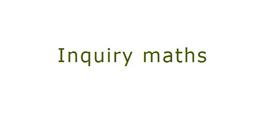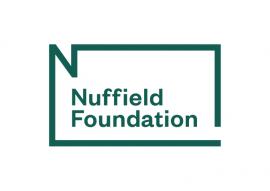Multiplicative Reasoning
Students are required to solve problems using multiplicative reasoning in a range of contexts. This resource package contains a variety of situations requiring students to use multiplicative reasoning where two quantities have a fixed product or fixed ratio represented graphically and algebraically.
Visit the secondary mathematics webpage to access all lists: www.nationalstemcentre.org.uk/secondarymaths
- ALL
- Teacher guidance
- Video
- Group work
- Activity sheet
Teacher guidance
Ratio Inquiry
Ratio inquiry starts with a simple prompt of four numbers in boxes connected by arrows and suggests different approaches to the task that may be considered. It is suggested that students look at differences and multiplicative relations between the numbers.
An extension task in which an extra relation is added between boxes is also described. There are two resource sheets to accompany the prompt.
Year Eight Multiplicative Relationships Mini-pack
This mini-pack contains materials focusing on developing students' understanding of proportionality.
Phase 1 addresses the need to move from additive to multiplicative thinking, introduces the idea of scaling numbers and identifying proportional sets and emphasises fraction, decimal and percentage equivalents.
Phase 2 involves identifying practical examples of proportions, leaving further extension to link with work on linear functions.
Phase 3 examines problems, mainly within the field of number, which are solved by multiplication or division, or a combination of the two operations. It highlights strategic approaches to problems by systematically examining the stages of a solution and emphasises the use of calculators, seeking to automate the process of calculation, using the operational understanding developed in the first phase of the unit.
Year Nine Proportional Reasoning Mini-pack
This unit provides an opportunity to revise, consolidate and extend ideas already introduced and to make links to other mathematical strands. Making such links, especially with visual contexts, can help pupils to understand proportion. In phase one students consider what happens when successive scalings and their inverses are applied and requires students to use tabular arrays to set out proportional relationships and find unknowns.
In phase 2 students link numerical work to geometry, exploring the invariant properties of enlargement and the concept of similarity. Students consider relationships ‘within’ and ‘between’ similar shapes.
In phase 3 students are asked to consider problems in a variety of contexts to identify the underlying relationships of proportionality and develop methods for solving proportion problems. There is particular emphasis on problems involving percentage increases and decreases.
Proportional Reasoning Transition Lessons
This resource contains the section entitled Thinking proportionally, consisting of two lessons designed to consolidate understanding of the relationship between ratio and proportion; reduce a ratio to its simplest form, including a ratio expressed in different units and recognise links with fraction notation.
Video
Scrapyard
This video raises quick-fire starter questions on: probability, ratio and proportion, rotational symmetry, square numbers and circles. For each topic a question is posed, offering a pause point for teachers to hold a freeze frame on screen while students discuss the question.
The ratio and proportion starter begins after 2mins 50 secs of the video and poses the problem of how to find the height of a pile of cars using only a metre ruler.
Group work
Developing Proportional Reasoning N6
Students reflect on the reasoning they currently use when solving proportion problems, examine proportion problems and appreciate their multiplicative structure and create their own variants of proportion problems.
Students are given four direct proportion problems to solve, taken from different areas of the mathematics curriculum. They compare their methods for solving these with methods produced by other students. This leads to a discussion that compares the use of more primitive informal methods that use adding, doubling and halving with the use of more sophisticated methods that use multiplication.
Activity sheet
Matching Graphs and Scenarios
This resource provides a set of twenty four cards which students use to match graphs with descriptions of the situations they represent. Examples include conversion graphs converting miles to kilometres and the amount of oil in a tank over time.
This activity is useful to link a real life situation to a graphical representation. It could then be extended to explore graphs in which the variables are proportional or have a fixed product.
Ratio
This resource contains sixteen instant maths ideas covering a whole range of suggestions that may be used as starter questions, extension questions or probing questions to assess understanding of ratio and proportional reasoning. Areas covered include: scaling up recipes, investigating paper sizes, value for money, proportion questions, rates and what does '24 carat gold' mean.






